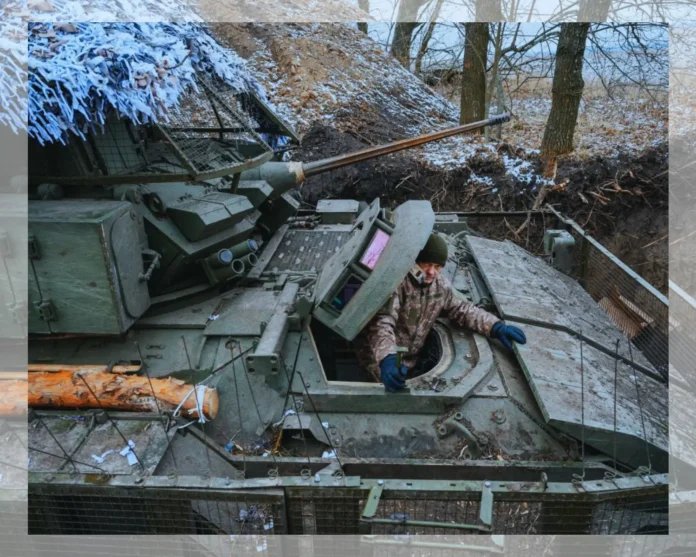Ukraine Conflict Update: Russia’s Kursk Operation
Russia’s military efforts to expel Ukrainian forces from the western region of Kursk are reportedly in their final phase, as per Kremlin spokesperson Dmitry Peskov. The announcement follows Russian President Vladimir Putin’s visit to the region, marking his first appearance there since Ukrainian troops advanced into the area. During his visit, Putin met with top military officials and troops stationed in the region, emphasizing the importance of securing Russian territorial integrity.
Amid these developments, U.S. President Donald Trump has indicated that negotiations for a ceasefire are currently underway. According to the White House, Trump’s special envoy, Steve Witkoff, is set to engage in diplomatic talks in Moscow this week. While Trump has refrained from specifying when he will next communicate with Putin, he expressed hope that Russia would agree to a truce. The ceasefire discussions come as part of broader international efforts to stabilize the region, with European and NATO allies closely monitoring the situation.
Key Developments in the Ukraine Conflict
- Ukrainian Troops Adjust Strategy: General Oleksandr Syrskyi, Ukraine’s military commander-in-chief, has suggested that Ukrainian forces in Kursk may be repositioning to minimize casualties. He emphasized the importance of strategic maneuvering to protect soldiers’ lives while noting Russia’s significant personnel and equipment losses in the region. Ukrainian defense officials reiterated that their primary focus is to ensure the sustainability of their operations while countering Russian advances.
- Putin Labels Captured Troops as ‘Terrorists’: Russian Chief of Staff General Valery Gerasimov has stated that 430 Ukrainian soldiers have been taken into custody, with Putin referring to them as “terrorists.” Russian state media has presented these captures as a significant victory, reinforcing the Kremlin’s narrative of securing its borders against external threats. Meanwhile, Ukrainian officials have disputed the figures, stating that some of their forces have strategically withdrawn rather than been captured.
- Ukraine Faces Mounting Battlefield Challenges: Ukrainian officials confirm continued territorial losses in the east and south, with multiple cities coming under intense Russian attack. Reports indicate that at least eight Ukrainian civilians were killed on Wednesday. In addition to military losses, critical infrastructure has suffered damage, further complicating humanitarian efforts in affected areas. Energy facilities and transportation hubs have been primary targets, causing power outages and logistical disruptions.
- Poland Urges Nuclear Deployment: Polish President Andrzej Duda has called for the U.S. to station nuclear weapons in Poland as a deterrent against further Russian aggression. The proposal was reportedly discussed with Trump’s special envoy, Keith Kellogg. Duda emphasized that NATO’s defensive infrastructure should reflect the current geopolitical reality, arguing that Eastern European countries should have equal deterrent capabilities as their Western counterparts.

- Ceasefire Talks in Motion: Ukraine and the U.S. have agreed to a 30-day truce, awaiting Russia’s official stance. Trump hinted at potential economic measures against Russia should Moscow reject the agreement. Analysts suggest that economic sanctions could be expanded to target Russian energy exports, banking systems, and key oligarchs. The global economic community is closely watching the negotiations, as energy markets and international trade may be significantly impacted by the outcome.
- European Allies Mobilizing: Defense ministers from key European nations—including the UK, Germany, France, Italy, and Poland—have convened to discuss the formation of a peacekeeping force. Reports suggest that up to 30,000 personnel could be deployed to secure Ukrainian infrastructure if a settlement is reached. French Defense Minister Sébastien Lecornu has indicated that European allies are committed to ensuring any ceasefire is upheld and that Ukraine remains supported both militarily and economically.
- Russian Air Defenses Respond to Ukrainian Drone Strikes: In a further escalation of hostilities, Russia reported that it had successfully intercepted 77 Ukrainian drones overnight. This follows Kyiv’s largest direct strike on Moscow since the beginning of the war. Russian defense authorities claim that their advanced air defense systems neutralized the threat before any significant damage occurred, but independent sources have suggested that several drones reached their intended targets.
- Ukrainian Cities Under Attack: Multiple Ukrainian cities, including Kyiv and Dnipropetrovsk, came under heavy bombardment Thursday morning. A 42-year-old woman was reported killed in Kherson, according to regional military administration head Roman Mrochko. The increasing intensity of airstrikes on civilian areas has raised concerns among international human rights organizations, which are calling for stronger protective measures for non-combatants.
Next Steps in the Ukraine Crisis
With the final phase of the Kursk offensive underway and diplomatic efforts gaining momentum, the international community remains focused on the potential for a ceasefire. If Moscow declines the proposed truce, further economic and strategic actions against Russia are likely. The coming days will be critical in shaping the next phase of the conflict. The Biden administration has indicated that additional sanctions, military aid packages, and diplomatic pressure will be used to push for de-escalation if Russia does not cooperate.
Meanwhile, Ukrainian forces are preparing for continued engagements, reinforcing strategic positions, and fortifying their defenses in key regions. Military analysts predict that the outcome of the Kursk battle could significantly influence the broader conflict, determining whether Russia will expand its operations into additional Ukrainian territories or if negotiations will lead to a stabilization of hostilities.
Stay updated as negotiations unfold and military movements continue to reshape the landscape of the ongoing Ukraine war. As both sides maneuver for advantage, the next few weeks will likely determine the immediate future of the conflict and the broader security landscape of Eastern Europe.


